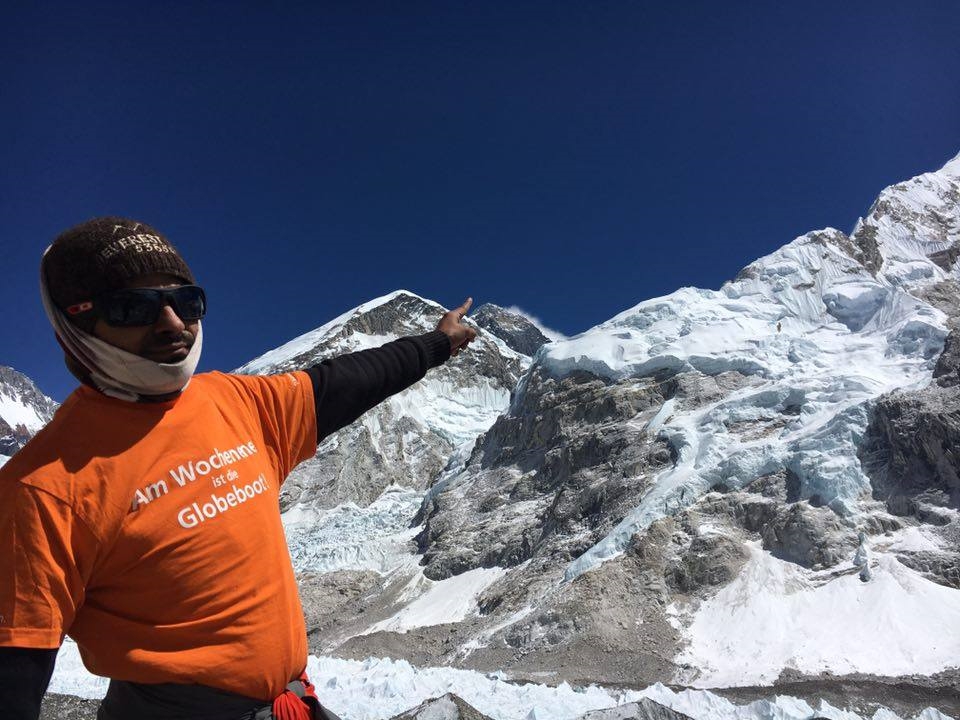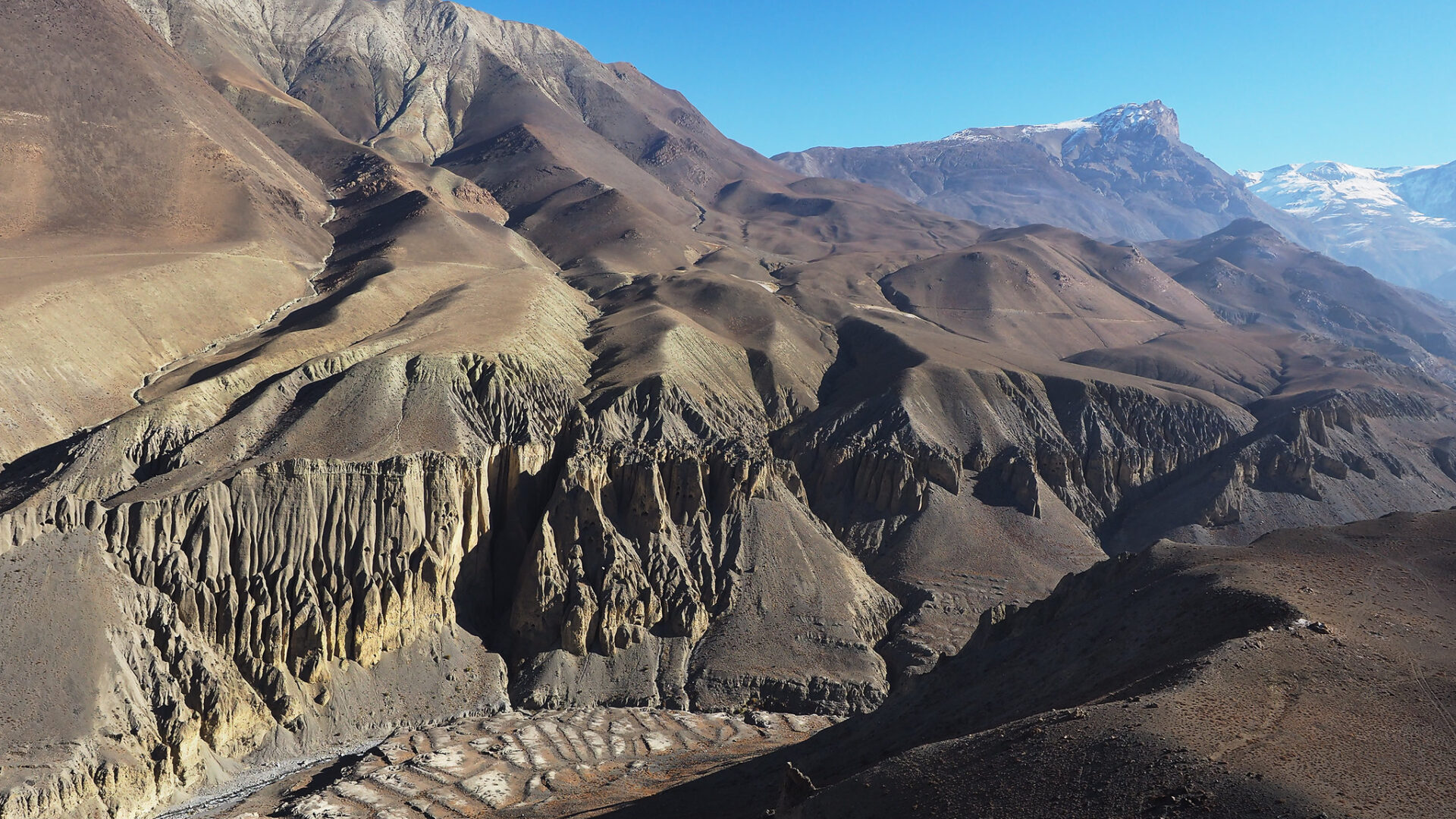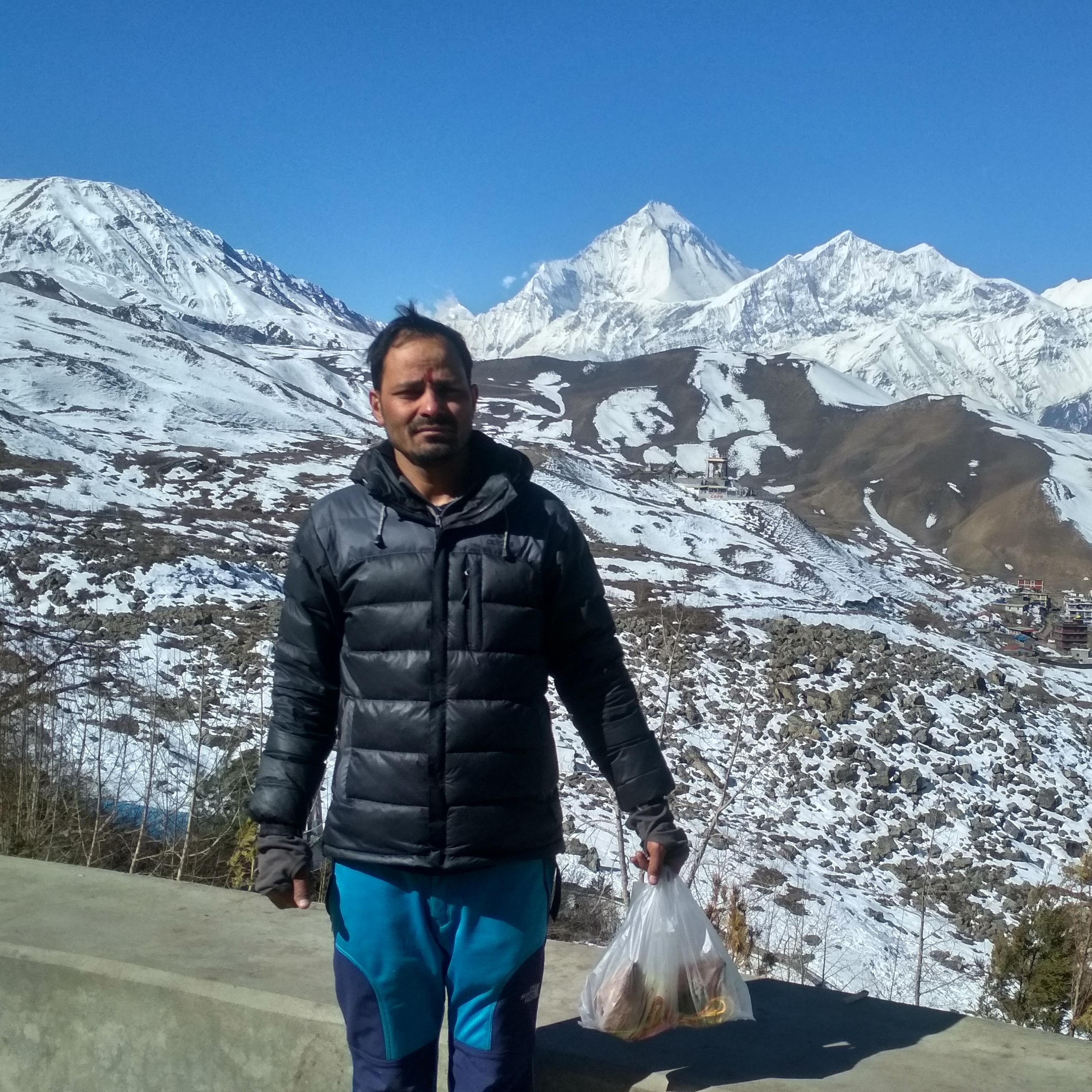Upper Mustang Trek
Upper Mustang Trek Highlights
- Lo La Pass at 3,950 meters (12960 feet) above sea level.
- Discover the historic Buddhist monasteries and the king's palace.
- Observe the white-washed houses with firewood piled on the roofs, as well as traditional Tibetan-style villages.
- The walled city is called Lo-Manthang.
- Discover a secluded region that borders Tibet.
- In towns, take note of the chortens, mani walls, and prayer wheels.
- Fossil stone origin: Damodar Kunda.
- Muktinath is a significant religious site.
Upper Mustang Trek is a moderate, isolated trail located in the northern Annapurna region, with an average elevation of 4000 meters. It offers an exciting blend of natural beauty, culture, and adventure, making it an essential experience for any ardent trekker traveling to Nepal. This area is renowned for its distinctive landscapes, which include deep canyons, towering peaks, and terrain that resembles a desert. The word “Mustang” comes from a Tibetan word that in Nepali means “fertile plain.”
Trekking up Upper Mustang is a fascinating experience that immerses you in the enigmatic realm of the former Buddhist kingdom of Mustang, also known as Lo. Moreover, the main draws of this trek are Lo-manthang, Chooser Cave, and Ghar Gompa. The trail offers you a glimpse into the rich culture and history of the upper Mustang region by passing through historic villages, Buddhist temples, and old monasteries. It is also well-known as the “Last Forbidden Kingdom” due to the distinctive scenery and the persistence of Tibetan culture.
The principal festivals observed by the people living in Mustangs are Lhosar, Tiji, Saku Lugka, and Duk Chu. In the middle of May, they celebrate the Tiji festival at Lo-Manthang. It is three days long. Similar to this, the horse festival, also known as the yartung mela and celebrated locally on the August full moon day, spans three or four days, beginning in Lo-manthang and continuing downhill through horse races, archery, dancing, and celebrations. Upper Mustang residents speak traditional Tibetan languages and adhere to Tibetan Buddhism. They invite Lamas to conduct religious rites at their house on special occasions. There are many chortens, mani walls, and monasteries throughout the township.
Permits for Upper Mustang Trekking
It is a restricted area that was opened for trekking in 1992. As it is restricted area, special permits are required to visit this region which can only be obtained through a registered trekking agency in Nepal.
- Annapurna Conservation Area Permit (ACAP).
- Restricted Area Permit.
Travel Insurance
Travel insurance is required for any trek in Nepal, including the Upper Mustang Trek. There will be high-altitude trekking during the trip, which could be hazardous and physically taxing. In the event of an accident, a medical emergency, a delayed or canceled flight, or lost or stolen luggage, travel insurance can provide financial protection. Make sure your travel insurance for the Upper Mustang trek includes coverage for emergency helicopter evacuation and high-altitude trekking, as these can be costly without coverage. You can also get extra coverage for adventure sports, hiking, and mountaineering, depending on your plan.
Guide and Porter
To ensure safety and make the most of your time, it is always advised to trek with a knowledgeable, experienced, and licensed guide or to join a trekking agency. Furthermore, as per the Nepal Tourism Board, all hikers must obtain the services of a licensed trekking guide and obtain (TIMS Cards) from authorized trekking agencies affiliated with the Nepalese government. Notably, Nepal Holiday Treks and Tours Pvt. Ltd. is a trustworthy business that has been officially registered with the Nepalese government. They can offer you a technically competent guide and porter who is insured, as well as a helpful and amiable English-speaking guide. Because they are highly skilled trekking guides, they always carry the necessary safety equipment, including first aid kits and gear, and they perform safety checks promptly.
The ideal season for visiting Upper Mustang
All seasons are suitable for trekking to the Upper Mustang, but the best time to go will give you the best experience from beginning to end. Generally speaking, varying seasons will provide you with diverse topography, fauna, and experiences.
Autumn Season (September- November)
The harvesting season occurs during the autumn months, when day and night hours coincide. The clear skies offer breathtaking views of the mountains, the weather is mostly stable, the temperatures are moderate, and the walking temperature is at its most comfortable during the day. Lower elevations are warm, but the high mountains remain chilly. You will see trees along the trail with leaves in shades of yellow, orange, red, and brown.
Spring Season (March- May)
The pre-monsoon season is when nature restores its once-lost splendor. Discover a vast array of blossoming flowers that create vibrant hills, including magnolia, the national flower of Nepal, rhododendron, and other types of wildflowers found throughout the nation. Treks with high passes are best tackled in the spring. The days get longer and the surrounding temperature rises, allowing for stronger sunlight.
Summer (June- August)
The monsoon and summer seasons are combined in Nepal. The first few weeks of the season are intensely hot, and by the middle of it, it starts to rain. The trails are therefore muddy and slick as a result of the frequent downpours. For those who enjoy the outdoors and adventures, summer is ideal. The foothills are lush and wildflowers are in full bloom during this time of year.
Winter (December- February)
Winter is the season of snowfall and extreme cold, but it’s also the most enjoyable time of year for treks in the lower regions. However, since the locals move to Pokhara or Kathmandu during the winter, trekking in the Upper Mustang is difficult. Therefore, now is not the best time to hike. Winter is a great time for easy treks like the Ghorepani Poon Hill Trek, Panchase Trek, and Khopra Dandatrek, as well as hiking trails like the Annapurna Base Camp Trek, Mardi Himal Trek, and Jomsom Muktinath Trek. Keep in mind that high altitude areas above 3000 m will be snowy and extremely cold.
Altitude Sickness
Altitude sickness usually happens when you ascend to a high altitude too quickly. At high altitudes, your body tries to adapt to the lower oxygen levels and lower air pressure, which can cause symptoms like fatigue, headaches, and nausea. One should take the initiative to inform the guide as soon as possible about this illness.
Fitness/ Experience
For upper mustang trekking, certain health, medical, and physical requirements must be met. The Upper Mustang Trekking Trail is an adventurous and moderate trek. Your average hiking time will be between five and six hours, depending on your destination. Therefore, trekkers with heart or lung conditions, or those with chronic illnesses, are not advised to attempt this trek. It is best to stay away from this trip. All hikers with an average level of fitness, however, can easily finish this trail. While not required, it will be advantageous if you have any prior hiking experience or engage in regular exercise.
Foods and lodging
In the mountains and in isolated villages, lodging is typically simple and unassuming. The room, shower, and restrooms are shared by two people. Although the accommodations at the mountain teahouse are simple, with just a bed, pillow, and blankets, the view is breathtaking. Two single bedrooms with mattresses, pillows, warm blankets, attached bathrooms, and hot water are features of the standard lodge.
Teashops and lodges typically serve a wide variety of delectable meals, including Nepali, Indian, Italian, Tibetan, and continental fare, to accommodate the varied tastes of hikers. Since the local cook will only use vegetables from the area, every dish will have a distinctively local flavor. Additionally, you ought to sample some other regional dishes from Nepal, like momo and Thakali Khana, Dhindo and Gundruk, Sel roti, and Nepalese curd.
We will make sure you are accommodated in the best tea houses on the trek, offering breathtaking views and scenery along with organic, hygienic, and healthful food.
Upper Mustang Trek Itinerary
Drive from Kathmandu to Pokhara
Fly from Pokhara to Jomsom-Kagbeni
Trek from Jomsom to Chele (6 hr walk)
Trek from Chele to Syangboche (7-8 hr walk)
Trek from Syangboche to Ghami (6-7 hr walk)
Trek from Ghami to Charang via Ghar Gompa (7 hr walk)
Trek to Lo-Manthang (5 hr walk)
Rest day at Lo-Manthang
Addictional Rest Day
Trek from Lo-Manthang to Yara (6-7 hr walk)
Trek from Yara to Tangye (4-5 hr walk)
Trek from Tangye to Tetang/Chossang (6-7 hr walk)
Trek from Tetang to Kagbeni (4-5 hr walk)
Trek from Kagbeni to Jomsom
Fly back from Jomsom to Pokhara
Drive from Pokhara to Kathmandu
Upper Mustang Trek Inclusions
What's included
- Tourist bus to Pick and drop for Kathmandu – Pokhara-Kathmandu.
- Flight charges for Pokhara – Jomsom – Pokhara.
- Special permits for Upper Mustang and ACAP permit during the trek.
- All taxes and other applicable fees & charges.
- 2 night hotel B/B in Pokhara.
- Provided with Experienced & English speaking License holder guide.
- One porter for two guests.
- Accommodation in selected tea house.
- 3 Meal a Day (lunch, dinner and breakfast with 3 cup of tea or coffee during the trek) for guests.
- Insurance, daily wages, equipment, meals and accommodation for guide and porters.
- Equipment (sleeping bags, down jackets and maps).
Add-ons
What's not included
- Fees of visa for Nepal.
- International Airfare to get in and out of Nepal.
- Expenses for beverages, drinking water, desserts, extra porters, personal insurance ,shower, laundry or any other services which are not mentioned by the company.
- Cost for spending extra nights in certain destination in your will.
- Travel Insurance and rescue charges .
- Lunch and dinner in Pokhara.
- Tips which may be provided by you to the guides, porters or anyone during the trip.
Upper Mustang Trek FAQs
What is the distance from Kathmandu to Lo-Manthang and back to Kathmandu?
It takes about 600 kilometers to travel round trip from Kathmandu to Lo-Manthang and back.
Why is Lo-Manthang called the old city and Himalayan medical hub center?
Because of its lengthy history and remarkably intact traditional architecture, which reflect its importance as the former capital of the Kingdom of Mustang, Lo-Manthang is known as the "old city." Because of the medical facilities and services that are available to meet the needs of locals and hikers in the isolated Himalayan region, it is also referred to as the Himalayan medical hub center.
How high is Damodar Kunda lake, and what is the meaning of Kali Gandaki River?
In Nepal's Mustang region, Damodar Kunda Lake is located at an elevation of roughly 4,890 meters (16,040 feet) above sea level. It is religiously significant to Buddhists and Hindus alike. Conversely, the Kali Gandaki River is a significant river in Nepal and a tributary of the Indian Ganges River. In English, "Black Gorge" is the translation of the name "Kali Gandaki." "Gandaki" means "gorge" or "canyon," whereas "Kali" means "black" or "dark." The dark-colored sediment the river carries, which stands out sharply against the surrounding scenery, is what gives the river its name.
How remote is Upper Mustang, and how much has it changed in the last 40 years?
Located in Nepal's Himalayan region, close to the Tibetan border, Upper Mustang is a very isolated place. Access is challenging due to its remote location and antiquated infrastructure. Upper Mustang has changed significantly over the past forty years, mostly as a result of increased connectivity and tourism. A surge of tourists has resulted from the region's increased accessibility due to better roads and transportation. Traditional ways of life and the environment have been impacted, as well as economic opportunities and challenges. Furthermore, contemporary conveniences and innovations have progressively infiltrated the area, transforming various facets of everyday existence for the inhabitants.




